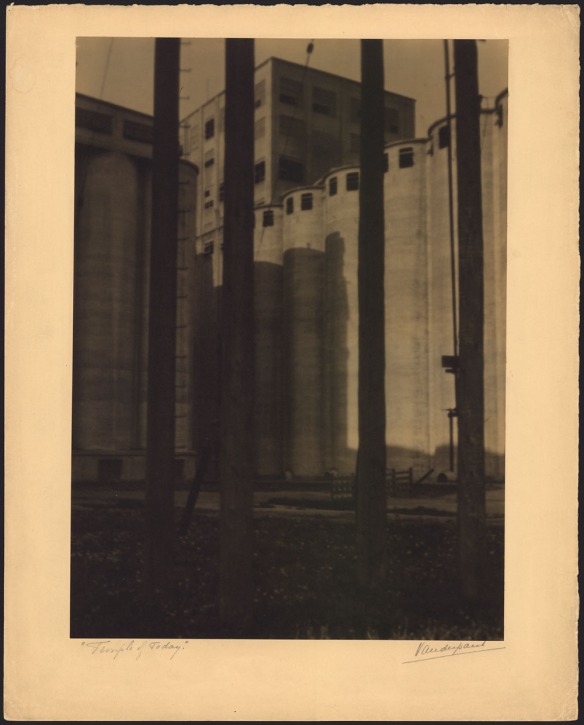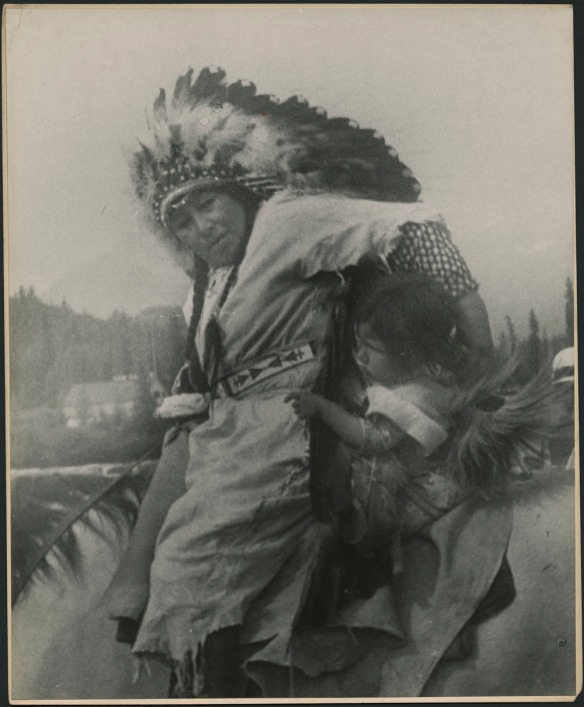 Canada: Who Do We Think We Are? is a new exhibition by Library and Archives Canada (LAC) marking the 150th anniversary of Canadian Confederation. This exhibition is accompanied by a year-long blog series.
Canada: Who Do We Think We Are? is a new exhibition by Library and Archives Canada (LAC) marking the 150th anniversary of Canadian Confederation. This exhibition is accompanied by a year-long blog series.
Join us every month during 2017 as experts, from LAC, across Canada and even farther afield, provide additional insights on items from the exhibition. Each “guest curator” discusses one item, then adds another to the exhibition—virtually.
Be sure to visit Canada: Who Do We Think We Are? at 395 Wellington Street in Ottawa between June 5, 2017, and March 1, 2018. Admission is free.
This article contains historical language and content that some may consider offensive, such as language used to refer to racial, ethnic and cultural groups. Please see our historical language advisory for more information.
Temples of Today by John Vanderpant, ca. 1934

“Temples of Today” by John Vanderpant, ca. 1934. (MIKAN 3784205)
Photographer John Vanderpant saw Canada’s grain elevators as temples. They were part of his utopian vision for the country, based on a faith in trade and industry. For him, industry would define the nation’s future.
Tell us about yourself
It is amazing to think that I have been working at LAC for almost two decades now. The work in the photography section is incredibly diverse as are the collections themselves, and my time here has gone by incredibly quickly.
I come from an art history background, but I have always been as interested in the context of the work, as in its aesthetic qualities. By exploring the social, cultural and historical context of a photograph, we can begin to understand why it exists in the first place. Why was it created, who asked for it to be created, where and how it was circulated—all of these questions fascinate me. I suppose this is how I ended up as an archivist, because context and provenance are the pillars of any archival collection. I enjoy both the detective aspect of working on the historical photographs in the collection, and working with current photographers, digging into the rationale behind the taking of a photograph. I’ve published and presented on a wide variety of LAC photographs and collections over the years, including photos by John Vanderpant and Yousuf Karsh that were taken on cross-Canada trips in 1930 and the early 1950s respectively. These cross-country trips really intrigue me. They seem like a Canadian rite of passage even today, but they also speak volumes to the ever-shifting notion of Canadian identity.
Is there anything else about this item that you feel Canadians should know?
The John Vanderpant fonds has become one of LAC’s most important photographic fonds, as his work has grown in stature through the research of a number of Canadian art historians over the last 30 or 40 years. The photograph was taken around 1934 in the Vancouver ports area. Vanderpant was one of Canada’s leading pictorialist and straight photographers, and his series of images of the grain silos in Vancouver is now considered iconic.
When Vanderpant arrived in Canada from Holland in 1911, he saw the nation as most other Europeans did—a vast and empty wilderness. By the time he took the photograph “Temples of Today” in 1934, he dreamed of a country with the immense potential and unexploited resources to become an industrial powerhouse of the future. Of course he was not alone in this sentiment, and the interwar years were a period of great urban and industrial development in Canada. This photograph in particular illustrates his turn away from the more painterly, “fuzzy” qualities of pictorialism toward straight photography. This style embraced a stripped down modernist aesthetic and, just as importantly, a subject matter that represented a strong belief in a future dominated by an urban and industrial life. “Temples of Today” purposely eschews beauty, focussing instead on the massiveness of the silos coming out of the shadows into full light, with the foregrounding of the hydro poles reinforcing the industrial message. The photograph perfectly illustrates the development of a popular philosophy about the natural progression of mankind through industrialization. Vanderpant strongly subscribed to this view and wrote articles and gave many public lectures on the topic. But along with this forward focus, Vanderpant, with so many other Canadians of the time, completely dismissed the Indigenous peoples of the country, seeing Canada as a kind of terra nullius or unoccupied land ready to be exploited and developed however the settler culture wanted. Vanderpant’s photographs are rightly lauded today as an exceptional representation of an aspect of Canadian life that was largely viewed as unpalatable up to that point, but they also concealed, by omission, the importance of the founding communities of the nation.
Tell us about another related item that you would like to add to the exhibition
It is interesting to compare Vanderpant’s ideas about Canada, as represented in “Temples of Today,” with those of the German photographer Felix Man who visited Canada at almost the same time this photograph was taken. Man, considered to be a pioneer of photojournalism and of the photo essay format, travelled across Canada for six months in 1933, commissioned by the German picture magazine Berliner Illustrirte to “visit Canada and photograph all the most important things.” LAC acquired about 200 of his images in 1985 in order to document how Canada was perceived by a European during the interwar period. Like Vanderpant, Man was overwhelmed and inspired by the vastness of the country he visited. He visited almost every region, but was particularly taken with the prairies and the northern regions—going as far as Churchill, Manitoba, and Great Bear Lake, Northwest Territories.
But in most other ways, Man’s view of Canada could not have been more different than Vanderpant’s. Both held what could be described as romantic views of Canada. Vanderpant romanticized a future, industrialized and urban Canada, while Man held a more typically European view of a Canada frozen in a romanticized past. He was heavily influenced by the stories of Indigenous heroes written by fellow German Karl May (who famously only visited North America after his books were published). His idealized fantasies of the “noble savage” remain popular in central and Eastern Europe to this day. Man’s photographs vividly depict this romantic image of Canada. While Vanderpant’s images focus on the development of Canada, Man, as photographic historian Joan Schwartz has noted, largely excluded urban Canada in his photographs. Instead, his camera captured such views as the unrelenting snow and ice around Churchill in winter, and the “Banff Indian Days,” a popular tourist attraction in which Indigenous peoples donned stereotypical costumes, erected wigwams, and put on displays of hunting and horsemanship for pay.

“Indian Woman with Child” by Felix Man, taken during “Banff Indian Days” in Banff, Alberta, 1933. (MIKAN 3333566)
His photograph of the Indigenous woman and child on horseback is an excellent example, with its grainy aesthetic, and the woman in an elaborate headdress (which in reality were only worn by women in exceptional circumstances) reaching back to embrace the small child. The “Madonna and child” symbolism presents all the qualities necessary to build a stereotypical and generalized narrative of 20th-century Indigenous peoples as still living their so-called traditional lives, and the images of the Banff “Indian Days” were very popular with the European press.
The exclusion of Indigenous peoples in John Vanderpant’s representations of an industrial and urban Canada, and the fixing of them into a mythical past by Felix Man, also tie into the works of urban Iroquoian photographer Jeff Thomas in this exhibition. Using toy figurines posed with the Parliament buildings in the first instance, and in front of a rail car emblazoned with the word “Canada” in the second, Thomas seeks to reinsert Indigenous peoples into both Canada’s history and present. Thomas’ photographs introduce critical concerns about the roles Indigenous people played in the building of the nation-state of Canada and in the building of the railroad. Using the figurines, he plays on the stereotypes which were perpetuated and disseminated by photographers like Man, but also with the omission of Indigenous peoples from the narrative of the past, present and future of Canada. Considering these two seemingly unconnected photographs from the 1930s together allows us to bring these two stereotypical views of Canada together, and to see how the knowledge of the immediate and broader contexts in which they were created can deepen our understanding of not only the photographs themselves, but of Canada’s past and present as well.

Canada Day 2005, Brandon, Manitoba, Canada from The Delegate on Tour Series by Jeff Thomas, 2005 (MIKAN 3932014) ©Jeff Thomas

Parliament Hill, Ottawa, Canada, 2007 from The Delegates on Tour Series by Jeff Thomas. (MIKAN 3932081) ©Jeff Thomas
Biography
Jill Delaney is an archivist in the acquisition of photography of the Visual, Sound and Landscape section, Private Archives Branch. She holds a Master of Canadian Studies from Carleton University (1991) and a doctorate in Art and Architectural History and Theory from SUNY-Binghamton (1997). Jill joined LAC in 1998 as a photography archivist and has been working with the collections ever since, with the exception of an assignment in the architectural records section.
